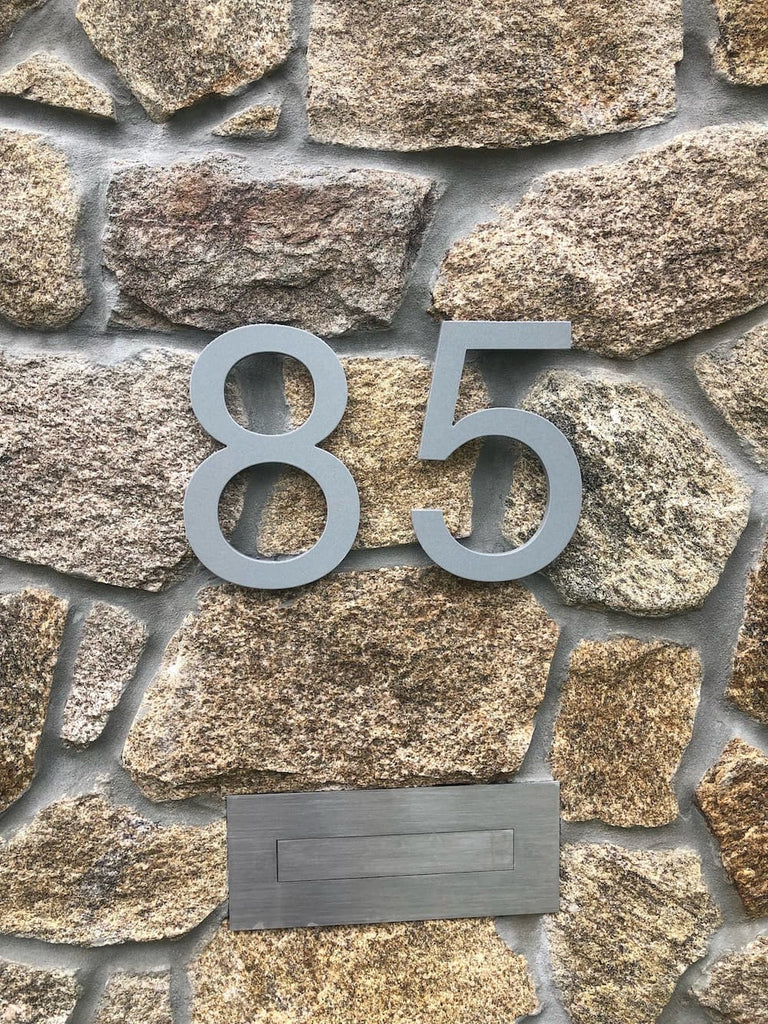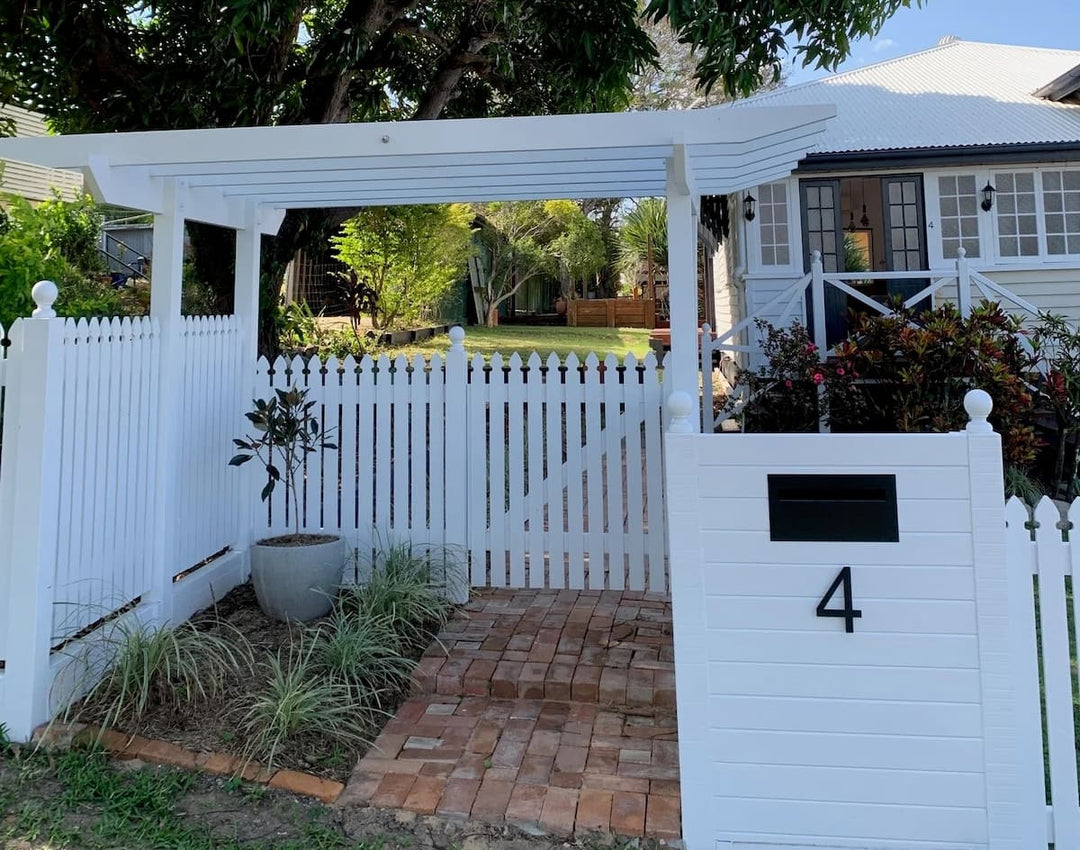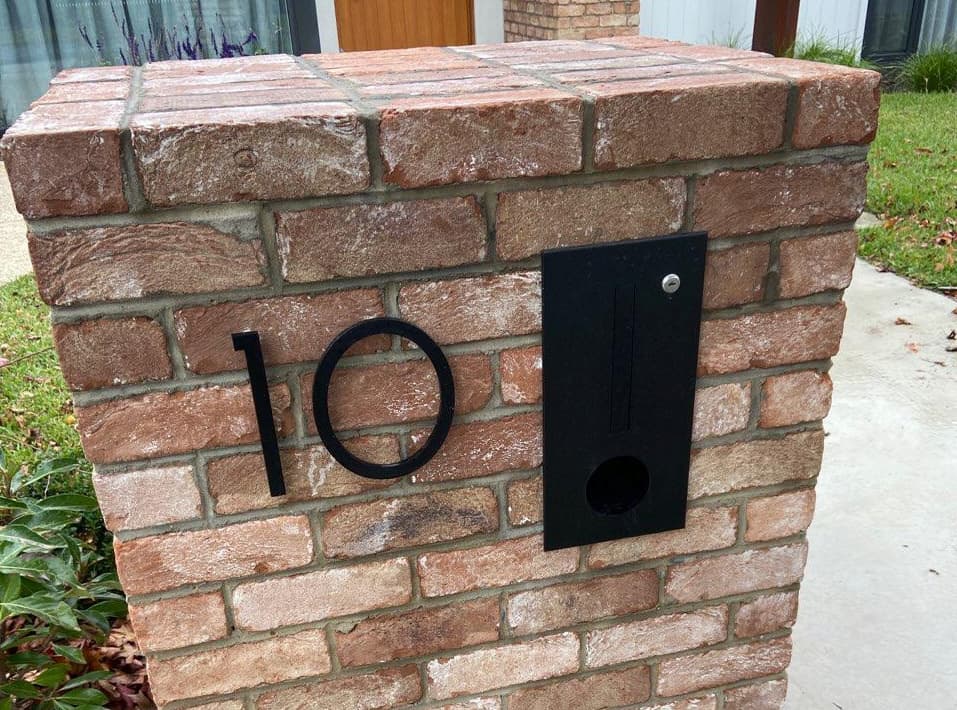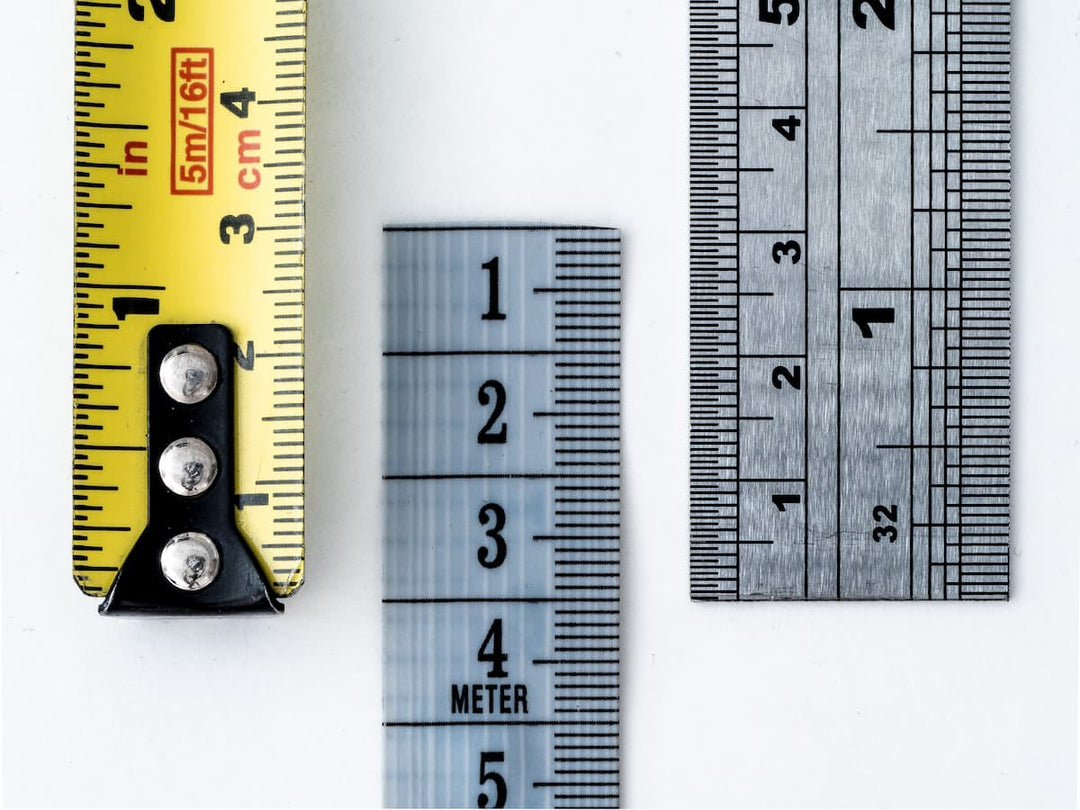Why we don't sell brushed aluminium house numbers
In the past, we sold brushed aluminium house numbers, and we're often asked why we no longer offer this.
How are brushed aluminium house numbers made?
Brushed aluminium house numbers can be difficult, or problematic to manufacture. The process of brushing aluminium involves using a wire brush or sandpaper to create a brushed finish with lines on the metal in a consistant direction. If there's any movement in the brushing/sanding the brush effect can look a little strange, so using a burnishing tool or table sander can help.
Importantly, after brushing the aluminium, the surface must be treated to protect it from corrosion.
Protecting aluminium from corrosion
Although aluminium won't rust, it can corrode. Corrosion of aluminium occurs when the metal reacts with oxygen and forms a thin layer of aluminium oxide on its surface. This layer can protect the metal from further corrosion, but if it is damaged or worn away, the underlying metal can be exposed and begin to corrode.
Corrosion of aluminium can take several forms, including pitting, crevice corrosion, and galvanic corrosion. Pitting corrosion occurs when small holes or pits form on the surface of the metal, while crevice corrosion occurs in confined spaces where air and moisture cannot circulate freely. Galvanic corrosion occurs when aluminium comes into contact with another metal that is higher or lower on the Galvanic Series, causing a chemical reaction that can lead to corrosion.
To prevent corrosion of aluminium, it is important to protect the surface from exposure to moisture and other corrosive substances. This can be done by applying a protective coating or using aluminium or passivation techniques to create a more stable oxide layer on the surface of the metal.
When we were offering brushed aluminium house numbers, they were treated with three coats of a clear protectant to help ensure no corrosion. This is a labour intensive step - and can be problematic if any of the surface treatment chips off. Skipping this step result will an appearance similar to the above where there is clear corrosion [not one of our numbers!].
Chromate treatment and powder coating for enhanced protection
We want our custom house numbers to last for a long time. After all a house number isn't the kind of product you replace every couple of years! The most robust solution for preventing aluminium corrosion and ensuring longevity [although not the cheapest] is chromate treating and then powder coating.
Chromate treatment of aluminium, also known as 'chromating' or 'chemical film treatment' is a process that enhances the corrosion resistance of aluminium and improves its paint adhesion. Chromate treatment involves immersing aluminium into a solution containing chromic acid and other chemicals, which causes a chemical reaction on the surface of the metal.
This reaction creates a thin layer of chromium oxide, often referred to as a chromate conversion coating, on the surface of the aluminium. This chromate conversion coating provides a barrier that protects the underlying aluminium from environmental factors such as moisture, salt, and other corrosive substances. It also enhances the adhesion of paints and other coatings to the surface of the aluminium.
The chromate treatment leaves a yellowish tinge to the number, which doesn't look great in its raw form. After chromate treatment we powder coat our numbers, and use a Dulux silver powder coat as an alternative to brushed aluminium.
You can view a range of our silver house numbers in the gallery page here.
The final effect of our silver house number looks great however is not the same as a brushed finish - we want your house number to both look great, and last a long time and this is the nest balance of those requirements.






Leave a comment